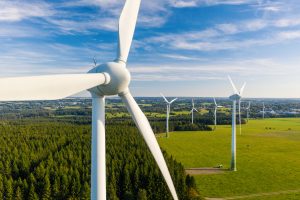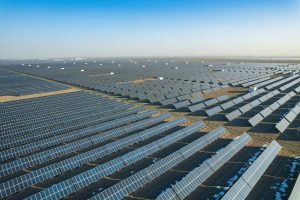Investing in financials - sustainably

Recent volatility in the banking sector has driven investors to consider their portfolios’ exposure to financials. As impact investors, our client portfolios have limited exposure to the big listed banks. The main reason for this is the lack of progress many big banks are making to reduce their commitment and support of the fossil fuel industry, along with other trade-offs that go against the attainment of the
UN Sustainable Development Goals (UN SDGs)
Why we don’t invest in big banks
If we take climate change as an example of a ‘trade off’, big banks continue to be heavily involved in funding the fossil fuel industry. We understand that, inevitably, there is need for some continued investment into fossil fuels in the short term as we transition towards cleaner energy sources and industrial materials and processes. There remains, however, a significant mismatch between many of the big banks’ stated goals to transition and their actions.
The scale of the issue was highlighted by the Rainforest Action Network in their recent annual ‘Banking on Climate Chaos’ report 3 . It revealed that the world’s 60 largest banks by asset size have invested $5.5 trillion dollars into the fossil fuel industry 4 since the Paris Agreement was signed seven years ago. While there was no direct obligation placed on banks in the 2015 Paris Agreement, 49 of the banks covered in the study have made net-zero commitments. In 2022 alone, the 60 largest banks provided $673 billion to more than 3,000 companies engaged in fossil fuel activities, including $150 billion specifically to the top 100 companies expanding fossil fuels 5 .
A Bloomberg New Energy Finance (BNEF) survey 6 in 2021 shows that their support for lending to fossil fuels still outweighs renewables, which is where we focus our investments. Just over $1 trillion went to fossil fuels compared with $842 billion to low carbon energy projects and companies 7 , according to the report. Put another way, there was only $0.81 financing low carbon energy supply for every $1 provided to fossil fuels in 2021. The report estimates that the world needs to be investing $4 in renewable energy for every $1 in fossil fuels by 2030.
Alongside the impact considerations, we also hold concerns about the volatility inherent in the business model of banks. This was summarised by Terry Smith in his piece “Why I never invest in bank shares”. There are reasons to be wary of investing in banks, specifically that they deploy a lot of leverage and are vulnerable to big exogenous shocks, themes that have been especially prevalent in the last 18 months as interest rates have risen across the developed world. This echoes Warren Buffett’s assessment of the airline industry as a “death trap” 8 in 2013 and not unlike airlines, even if a government bail-out can be counted on when times get tough, shareholders can face the risks of heavy losses.
The financials we invest in
So, if we avoid the shares of many of the big banks, where do we get our financials exposure?
Microfinance
One key area of focus for us is investing in
Microfinance
Insurance
Insurance is also a sector where considering climate risk is of growing importance to the industry and we’ve seen advances in how much sustainable investing considerations have moved up the agenda. Insurance companies have a critical role to play in mitigating climate change and other sustainability issues and because of their innate focus on risk, they’re well placed to understand and value the longer-term consequences of climate risk. By embedding and seeking to quantify this in their underwriting process, insurance and re-insurance companies offer a unique and direct means for the corporate world to consider the cost of poor environmental compliance and risk observance in their business activities.
Fixed income
Finally, we find opportunities in the
Fixed income
Greenium
It’s hoped that with increased scrutiny from investors and increasing regulatory and policy obligations, big banks will begin to embed sustainability considerations into their value chains. This will drive performance improvement across the sector and is needed to help unlock significantly more finance into lower carbon intensive energy sources and broader societal and ecosystem related solutions.
Footnotes
-
biodiversity [/tooltip]loss"]Bankrolling Extinction: The top 10 banks financing biodiversity loss, BanktrackScroll to footnote
- Scroll to footnote
- Scroll to footnote
-
ibidScroll to footnote
-
ibidScroll to footnote
- Scroll to footnote
-
ibidScroll to footnote
- Scroll to footnote
- Scroll to footnote
- Scroll to footnote




